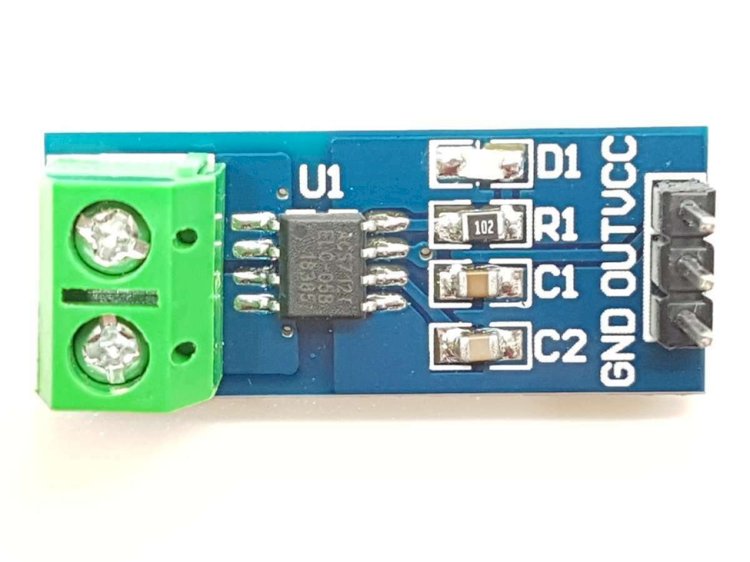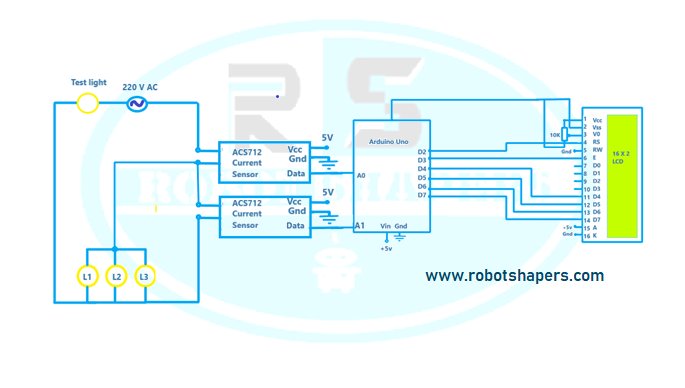Arduino Load Theft Detection System
: In a world where energy is precious and theft disrupts the balance, Robotshapers brings you an ingenious solution to safeguard your power supply. Introducing Tamper Protection Systems, the ultimate defense against unauthorized access to power lines and meter tampering. Embrace the power of innovation as we explore the cutting-edge features and components that make this technology a game-changer.

Tamper Protection Systems are more than just a shield; they ensure the integrity of your energy supply, reduce costs, and promote energy savings. With advanced measurement technologies like smart meters and real-time data analysis, we equip utilities to detect suspicious activities and tackle theft head-on.
Through the integration of Geographic Information System (GIS) technology, we visualize usage patterns, identify high-theft areas, and enhance monitoring for effective management. But it doesn't end there—our systems are designed for awareness too. Engaging awareness campaigns educate consumers about the consequences of tampering, fostering a community that stands united against theft.
With Robotshapers' Tamper Protection Systems, you hold the power to protect, conserve, and take charge of your energy destiny. Experience the ease of monitoring, the strength of security, and the empowerment to make a difference. It's time to illuminate the path to a brighter, tamper-free future. Join us on this electrifying journey today!
Tamper protection systems are designed to prevent or detect tampering events where individuals or unauthorized persons access power lines or use meters to stop charging the electricity they consume. These systems are designed to ensure the integrity of the energy supply, reduce energy costs and promote energy savings. Some of the products and functions commonly found in tamper protection systems include:
Tamper Detection: This system uses illegal bypasses, tampering with or bypassing meters. . Sensors can detect anomalies in electrical signals or detect physical tampering attempts.
Measurement Technologies: Advanced measurement technologies such as smart meters can be used to monitor and record electricity consumption at various points of the distribution network.
Smart meters can provide real-time data and enable remote monitoring, allowing utilities to identify suspicious activity and possible theft.
Data Analysis: Analyzing collected data to identify patterns and anomalies that may indicate electronic theft. Using machine learning algorithms or other analytics, the system can identify unusual usage patterns or suspicious behavior, enabling law enforcement to investigate further.
Alerts and Notifications: The system can generate alerts or notifications to the power company or other organizations when unauthorized or disruptive activities are detected.Police. These notifications can be sent via email, text message or central monitoring for timely action.
Geographic Information System (GIS) Integration: GIS technology can be integrated with systems to report and visualize usage patterns, identify areas prone to theft, and identify areas with high theft rates. This information can help monitor the importance of analysis and management.
Education and User Awareness: Anti-tamper systems often include awareness campaigns to educate consumers about the consequences of tampering for themselves and society. By raising awareness, people are encouraged to report suspected theft and prevent crime.
Legal and regulatory measures: Electronic anti-theft systems are often part of a larger effort that includes criminal legal and regulatory measures for those involved in electrical theft. Information and evidence from the system can be used to establish a case against the perpetrators and to support the prosecution.
Components required:
- Arduino Uno
- 16X2 LCD
- ACS712 current sensor (2 nos)
- 4 bulbs
- 10K variable resistor
- 5v DC power supply
ACS712 Current sensor:
The ACS712 is a popular current sensor that is commonly used to measure and monitor electrical current in various applications. It is an integrated circuit (IC) sensor that provides a convenient way to measure both AC and DC currents accurately. Here are some details about the ACS712 current sensor:
Working Principle: The ACS712 operates on the principle of the Hall effect. It utilizes a Hall effect sensor to measure the magnetic field generated by the current flowing through a conductor. This magnetic field is converted into an analog voltage proportional to the current, which can then be measured by a microcontroller or other monitoring devices.

Types: The ACS712 is available in different variants based on the current range it can measure. The most commonly used versions are ACS712-05A, ACS712-20A, and ACS712-30A, which can measure current up to 5A, 20A, and 30A respectively. There are also other versions available with higher current ratings.
Operating Voltage: The ACS712 is designed to operate at a supply voltage ranging from 4.5V to 5.5V, making it compatible with most microcontrollers and digital systems.
Output: The output of the ACS712 is an analog voltage that is linearly proportional to the measured current. The output voltage has a specific sensitivity defined in millivolts per ampere (mV/A). For example, the ACS712-05A has a sensitivity of 185 mV/A, which means that for every ampere of current flowing through the sensor, the output voltage will increase by 185 millivolts.
Interface: The ACS712 has three terminals: Vcc (power supply), GND (ground), and OUT (output). Vcc and GND are connected to the power supply, while the OUT terminal provides the analog voltage output that represents the measured current.
Accuracy and Calibration: The ACS712 has a relatively good accuracy for current measurements, typically around ±1.5% of the measured current value. However, it's worth noting that calibration may be required to achieve optimal accuracy, as individual sensors may have slight variations.
Applications: The ACS712 is widely used in various applications that require current sensing and monitoring. Some common applications include power supplies, battery chargers, motor control systems, energy monitoring systems, robotics, and industrial automation.
Circuit diagram:

Operation: Thesystem works according to the present invention. When there is a big difference between the introduction and the current result.This can be considered stealing the current in the loop. We have four lights here. Three of them are on the input side and one is used as a test lamp connected to the outside.
Pros:
1. Theft is easy to investigate.
2. Load distribution is easy to monitor.
3. If this system is installed in every family where theft can be caught.
Advantages:
- Theft detection becomes easy.
- Load distribution can be monitored easily.
- Theft area can be detected if this system is installed in every house.
Applications:
- Utilities: This system helps utilities detect and resolve electricity theft, reduce revenue, and manage loyalty programs.
- Smart Grid: In today's smart grid, it provides theft detection, real-time monitoring, warning and reduction of illegal energy consumption, thereby gaining confidence of customers.
- Location: Landlords and tenants can use tamper detection tools to monitor their energy use, identify vulnerabilities and prevent illegal access to electricity.
- Business and Industry: Business and industry use these systems to protect their electrical equipment and ensure the efficient and legal use of electricity.
- Government policy: Many governments require utilities to use intrusion detection equipment as part of energy conservation and waste reduction.
- Energy Efficiency: Investigating electricity theft promotes energy savings and promotes sustainable energy use by reducing waste and improving resource management.
- Environmental impact: Reducing electricity theft will help reduce greenhouse gas emissions from illegal connections and inefficient use of electricity.
- Public Safety: Tamper detection reduces the risk of electric shock and hazards by preventing unsafe blocks and connections.
- Data Analysis: Data collected from these systems can be used for further analysis to improve grid performance and increase energy efficiency.
- Lost Prevention: For insurance purposes, businesses and homeowners can use a theft detection system to demonstrate compliance with the law on safety and security measures that will reduce insurance costs.
Best projects in Bhilai, Chhattisgarh, India. Contact: 7067150002

 robotshapers1
robotshapers1 

















